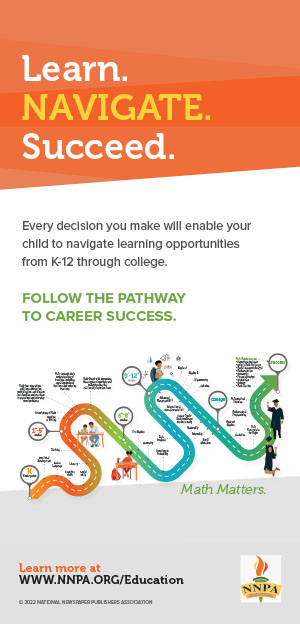Houston, Tx ŌĆō March 16, 2023. I have heard this loud protest about the Texas Education Agency (TEA) Taking over HISD. With a 2019-2020 enrollment of 209,309 students, we should be concerned. My question is very basic with the HISD takeover. Are we protesting for the right purpose? Should we ensure a quality education has afforded our children, or should we condemn the TEA assuming its statutory role as the agency that oversees primary and secondary public education. I am also concerned whether those appointed to ŌĆ£rightŌĆØ the system will have the intent and design to really improve the education system or to relegate certain demographics to a place their upbringing has taught they belong. We should ask how many of our schools are failing or functioning as a quality education campus? ┬ĀProtesting shares your views, but what do we want done?
What issues should we be focused on? The Department of Education (DOE) painted a grim picture for students of color in Houston-area public schools. They contend that there is severe inequity in discipline, which means Black and Hispanic kids are more likely to be suspended than white students. Suspension can have a big impact on achievement. In fact, time spent on task learning in the classroom is critical to a student’s success. DOE found a quarter of the students in HISD are Black, but they’re about seven times more likely to end up suspended compared to white students. The recent data available shows Black HISD students missed 23,699 days of class for disciplinary reasons in a single school year.
The Hechinger Report/Associated Press analysis of career and technical education (CTE) enrollment data from 40 states reveals deep racial disparities in who takes these career-oriented courses. Their article entitled, ŌĆ£How career and technical education shuts out Black and Latinos brings this disparity before us.ŌĆØ
The report finds historically, CTE was seen as a dumping ground for students who werenŌĆÖt considered college material. A two-tier educational system tracked predominantly low-income students and students of color into career and technical classes, then known as vocational education. But in recent years, schools have revamped these courses to prepare students for higher education and lucrative work in fields such as technology, health care and engineering.
Few of our African-Americans know that in June 2013, former Texas Governor Rick Perry signed into law House Bill (HB) 5, 83rd Texas Legislature, Regular Session, which established a new high school graduation programŌĆöthe Foundation High School ProgramŌĆö the purpose of the legislation was to integrate college and career readiness and optimize individual choice for students.┬Ā Stated another way, HB 5 was designed to instill more flexibility in public education by enabling students to either pursue a traditional path into colleges and universities or move directly into the workforce to help fill what business leaders say is a significant skills shortage. TEA is authorized by the Texas Education Code (TEC) to monitor compliance with requirements applicable to a process or program, and the related use of funds. Monitoring is conducted to ensure compliance with federal law and regulations and financial accountability, including compliance with grant requirements. The relevant statute is TEC ┬¦7.021(b)(1), in conjunction with ┬¦┬¦7.028(a)(1) and 7.028(a)(2).)
Changes were made to the stateŌĆÖs graduation requirements and accountability system to ensure school districts prepared all students to enter college or the workforce. Especially, when we view our dangerous gap in middle skill jobs, and the fact that the concept of college for everyone was not meeting the needs of 51% of Texas graduates who did not enter college.
Understand, the Foundation High School Program was designed to give students the flexibility to take more classes focused on their interests and career goals.┬Ā House Bill 5 also set up five endorsements from which high school students can choose. Students can take a variety of CTE courses to allow for exploration and a diverse education to support career decisions and post-secondary options. The five endorsements are: Arts and Humanities, Business and Industry, Public Service, Multidisciplinary Studies, Science, Technology, Engineering, and Mathematics (STEM). Endorsements and majors do not lock you into a career or field of study. These are intended to enhance your college and career readiness. Endorsements give students an early taste of different career options so that they are more prepared after graduating high school for college and for their career! A program of study is also referred to as a major. CTE Programs of Study are aligned to Endorsements. Many students that have the opportunity to take dual education course in high school, and some are graduating with an Associates Degree prior to their high school diploma. Others engage in apprenticeships or earn valuable certifications while in high school.
The history of HISD is well documented. Remember when Judge Ben C. Connally ruled HISD was unconstitutionally segregated. While HISD instituted a integration phase-in with each subsequent grade being integrated, a HISD Board member annunciated that he would ŌĆ£go to jail before seeing white children bused to predominately Black Schools.ŌĆØ
Marcus GarveyŌĆÖs words were clear, ŌĆ£If we as a people realized the greatness from which we came we would be less likely to disrespect ourselves.ŌĆØ He felt self-improvement was key to our survival. LetŌĆÖs advocate for a public education system of this state that ensures that all Texas children have access to a quality education that enables them to achieve their potential, and fully participate now and in the future in the social, economic, and educational opportunities of our state and nation.┬Ā In this 21st century, educations sets children up to succeed in a world where more than half of the jobs they’ll have over their careers don’t even exist yet. It is an education that provides students with the skills and competencies they need to thrive in the 21st century. In our K-12 system, we should be creating competitive young adults equipped with skills to succeed.
I suggest we advocate for the creation of a K-12 education that creates effective communicators, critical and creative thinkers, informed problem solvers and decision makers, responsible leaders and most significantly productive citizens. The improvement necessary required our building a robust economy. The most germane concepts of this movement were the concepts of self-help and unity.┬Ā We should be advocating and monitoring to ensure HISD adds to our communities economic growth and global competitiveness through education, training, and services that contribute to continuous workforce improvement.
I agree. A sense of hope requires our steadfast pursuit of a fruitful future for ourselves and those that come after us. Our children are our future!








